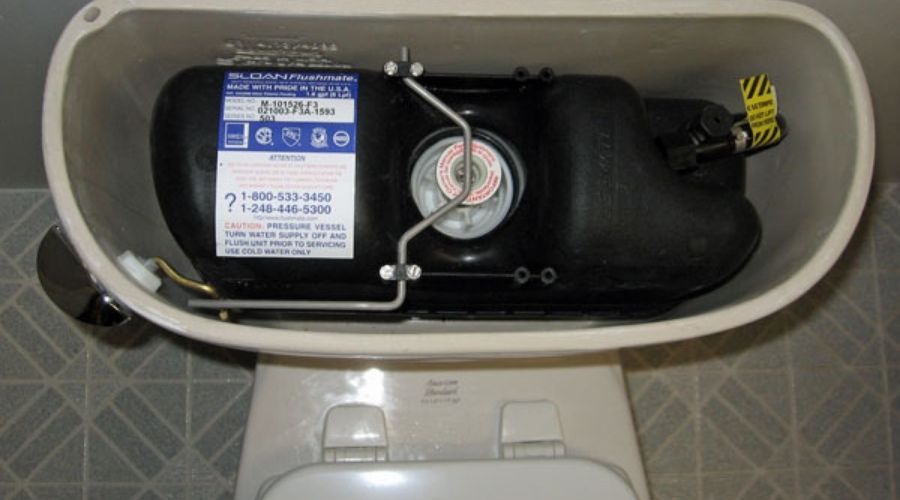The new wave of toilet innovations comes in the form of a pressure assisted toilet. These models were introduced as a response to the low functionality of some gravity-fed toilets. While the latter would use the force of gravity to move wastewater, a pressure-assisted design ensured a more efficient flush, thanks to compressed air.
The Emergence of the Pressure-Assisted Toilet
Compared to other types of toilets, the pressure-assisted model is much newer. That being said, many consider it to be “new and improved,” thanks to its modern-day functionality. When consumers were getting upset that they needed multiple flushes on their gravity-fed toilets to get a thorough flush, manufacturers unveiled the application of compressed air. The result was a pressure-assisted toilet that offered more force and less waste.
At first glance, a pressure-assisted toilet looks just the same as a gravity-fed one. The difference becomes apparent if you lift the lid of the tank. Unlike its predecessor, a pressure-assisted toilet has an inner tank that is sealed off from the water in the outer tank.
How Does it Work?
The way this design functions is that when you flush the toilet, compressed air forces water out of the bowl. This means more water pressure to thoroughly stream into the bowl, washing off any residue and completing the flush.
Advantages of a Pressure-Assisted Toilet
As you can imagine, the main benefit of a pressure-assisted toilet is that it is much more reliable and efficient. In fact, these toilets end up using less water most of the time because there are fewer flushes involved and the compressed air eliminates the need for copious amounts of tank water. For a quick clean and flush, lots of experts recommend a pressure-assisted toilet. Furthermore, there aren’t any additional pumps or devices needed to flush this toilet. The inner tank takes care of the compressed air and the force of the water will depend on your water company.
On the downside, these types of toilets tend to be pricier than the gravity-fed toilet, which could explain why many homes still have the latter. Earlier models of the pressure-assisted toilet were very noisy and a bit off-putting but more modern designs have remedied those issues. You can read our pressure assisted toilet reviews here.
Pressure-Assisted Toilet Varieties
Over the years, different styles of pressure-assisted toilets have come onto the market. One of them involves a dual-nozzle design that includes two openings for forcing water into the bowl. The result is a more forceful washing of the toilet bowl and guaranteed elimination of dirty wastewater. Another type of pressure-assisted toilet features a more traditional rounded bowl. This shape helps with the compressed air because it does a better job of directing the forced water. This achieves a quicker and more accurate cleaning while making the process a bit more powerful.
Some pressure-assisted toilets include a pump device to ensure reduced water usage. The high-powered pump can achieve a deeper clean without the use of added water so it’s an option that some people prefer. You can even find pressure-assisted toilets with plush or heated seats or bidet attachments. These days, there are all kinds of accessories and amenities that are showing up on different toilet models.
Should You Choose Gravity-Fed or Pressure-Assisted?
If you’re wondering whether you should go for a traditional gravity-fed toilet or a more innovative pressure-assisted one, the choice is ultimately up to you. Today, there are ample benefits to both of these designs so you should look at additional factors such as availability, cost, and size. Fortunately, you are likely to find either option within your price range so it is best to take your time and find a toilet that meets all of your needs.

